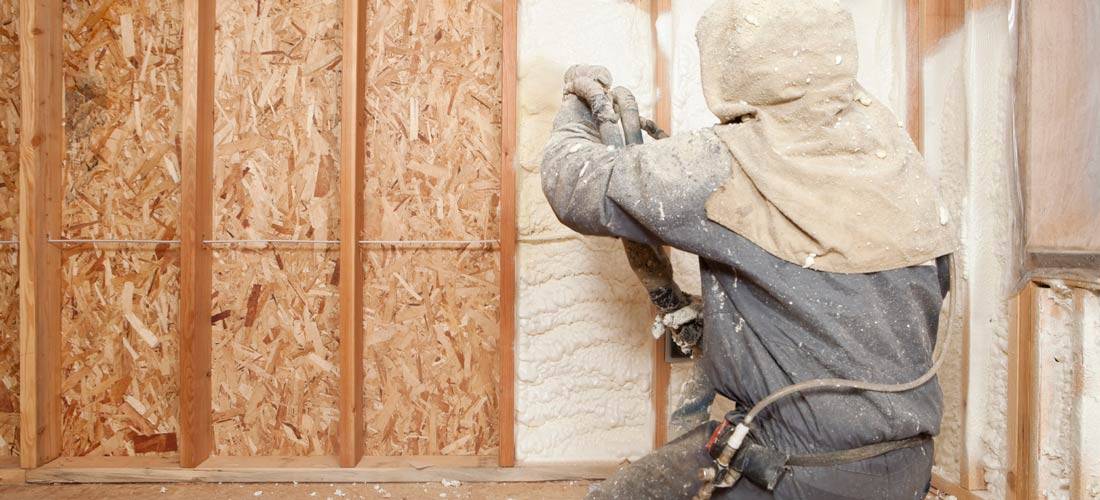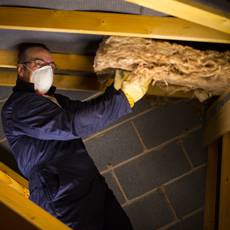Heating and cooling houses your home can cost a lot of money. A one time investment in some good insulation can help you save on bills.
Although there are alternatives to insulation such as choosing monthly budget bills, programmable thermostats and just lowering the thermostat, the one thing that reduces your energy consumption effectively is insulation. Investing in a better insulation proves beneficial in the long run, paying back over a period in terms of reduced energy bills and promoting a comfortable environment throughout the year.

What is the purpose of insulation?
The primary role of insulating the house is to reduce the transfer of heat. Hot air, being less dense, flows from warmer regions to cooler regions through walls, ceilings, and floors. In winters, the heat travels from the house to the cold exterior, and during summers, the heated exterior travels into the house. The variable temperature conditions prompt the use of several types of equipment that provide warmth during winters, and cooler temperatures in summer. An effective insulation gives the opportunity to reduce the transfer of heat to the cooler regions.
Effective insulation of a material is dependent on the R-value or the measurement that defines the materials resistance towards heat flow. The R-value considers the type of the material, its thickness, and density.
Installation of Insulation
Installation of the insulation calculates the R-value, which in turn helps in choosing the appropriate insulation method. Attaching insulation to a house is easy, and the government even provides incentives to implement the process. Consulting the home improvement store will give a better idea of insulation as they calculate the R-value and define the needed equipment and tools to install the same.
Places to install
Installation of the insulation is between floor joists, above hatches, attic doors, inside surface of basement walls, within exterior walls, floors, and unfinished spaces. It is crucial to install in a proper method to ensure that it deliver effective results.
Best practices
- If the insulation material is loose, it is important to blow it appropriately to achieve the desired density.
- Begin the process by ensuring safety of the home. Avoid skin and eye contact with the insulation material. Wear gloves, glasses, and hat for complete protection.
- Prior installation, ensure that the wiring of the house is perfect. If there are any damages, seek the assistance of an electrician to fix the problems. Packing insulation around a damaged wiring pipe is hazardous.
Determining the R-value
 Calculation of the R-value considers the weather, the efficiency of the existing heating and cooling system, construction materials used for the house, and the type of fuel used to run the heating system. For instance, the R-value differs from a house in Detroit to that of in Orlando, although they are both wood constructions and use same natural gas to fire the furnace. Achieving proper atmosphere calculates the desired comfort levels, the age of the house, and improvements carried out over the years. There are chances that a house might require fewer recommendations as stated against today’s standards.
Calculation of the R-value considers the weather, the efficiency of the existing heating and cooling system, construction materials used for the house, and the type of fuel used to run the heating system. For instance, the R-value differs from a house in Detroit to that of in Orlando, although they are both wood constructions and use same natural gas to fire the furnace. Achieving proper atmosphere calculates the desired comfort levels, the age of the house, and improvements carried out over the years. There are chances that a house might require fewer recommendations as stated against today’s standards.
Types of insulations
- Blanket insulation – Used inside walls, along foundation walls, ceilings, and floors and is made of plastic, natural fibers, fiberglass and mineral wool.
- Blown insulation – Used in closed walls, cavities, and along unfinished attics and is made of fiberglass, cellulose, and mineral wool.
- Spray or foam insulation – Similar to blown insulation but the material is made of phenolic foam and polyurethane.
- Rigid board insulation – Used inside ceilings, walls, and floors and is made of polyurethane.












Write a Comment